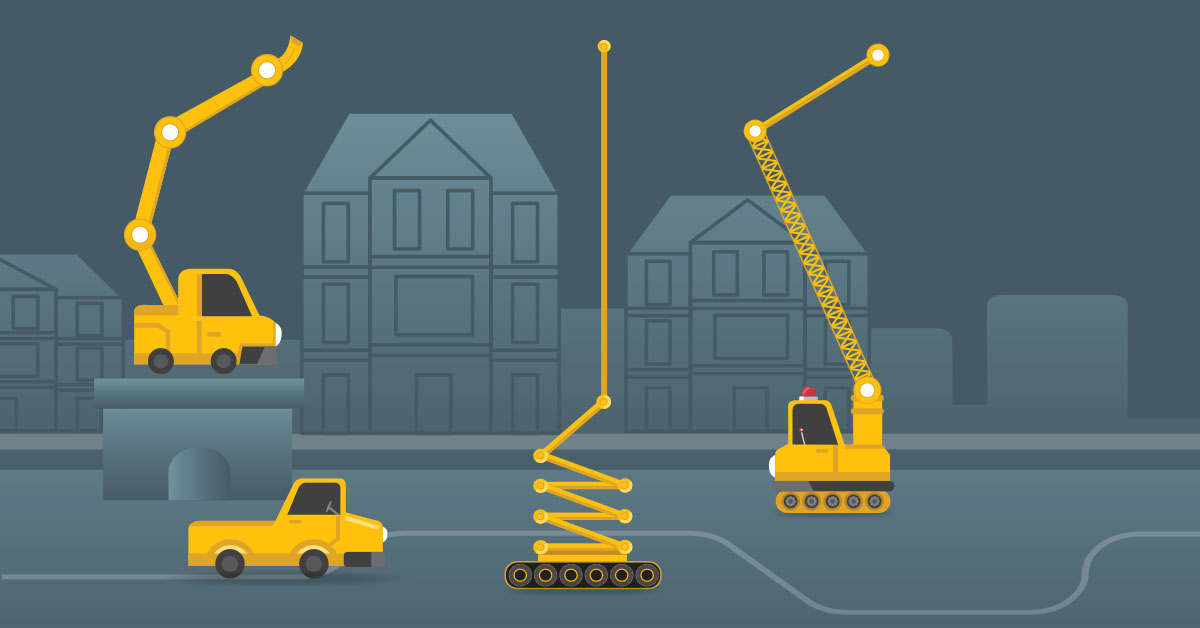An experienced commercial real estate developer was planning on building a 300-unit apartment complex in the Chicago suburbs. As he modeled the project, he considered two options for financing it.
The first option was to raise all the equity needed to finance the deal, a route that would tie up much if not all of his personal capital. The second option was to take out a multifamily construction loan to finance the development. After speaking with a commercial mortgage broker, the developer opted to take out the construction loan.
Developers use multifamily construction loans for one of two reasons: They either don’t have the capital to fund the project themselves or they don’t want to allocate such a large percentage of their liquid assets to one project. Instead, they’d rather leverage their funds to allow for more investment opportunities.
A developer will generally take out an apartment construction loan for a few years to fund the development and stabilization of the property. These construction loans are usually structured as interest-only products, with built-in reserves to cover the interest payments. After construction is complete, the developer will look to lease up and stabilize the property as quickly as possible.
Once a property is stabilized and generating cash flow, a developer will look to refinance the construction loan into permanent financing. Permanent loans are usually amortized over 25 to 30 years with both principal and interest payments made monthly (although some permanent financing options offer interest-only terms as well).
A borrower needs to be able to tell the story of the development project that needs funding and why it is the right deal for a specific lender.
Sometimes the construction lender may offer what’s known as a construction-to-permanent loan. In these instances, the loan will begin with an interest-only payment period during the initial construction phase. It will then convert into an amortizing loan over a fixed term once the property begins to generate cash flow.
Know the terminology
Two of the most crucial concepts to be aware of when looking for an apartment construction loan are the loan-to-value (LTV) ratio and loan-to-cost (LTC) ratio. While the LTV metric is utilized in conventional lending, it still is an important metric when it comes to multifamily construction loans as well.
With regard to conventional commercial real estate financing, LTV refers to the maximum loan amount a lender is willing to lend relative to the property’s current value. If an apartment complex is worth $5 million and the lender is willing to finance at 80% LTV, the borrower can obtain up to $4 million for the property.
Things differ somewhat when dealing with multifamily construction loans. In these cases, LTV is looked at relative to the property’s value after construction and stabilization (not the current value of the land). If the land where the project will be located is currently valued at $2 million but the projected value of the development after construction is $25 million, a multifamily construction lender willing to lend at 60% LTV will provide up to $15 million for the project.
LTC refers to the maximum percentage of the actual construction budget that a lender is willing to fund. If construction expenses will cost $15 million and the lender is willing to lend at 75% LTC, then the borrower will be eligible for a construction loan not to exceed $11.25 million.
Calculate the cost
When calculating the total cost of a project, a lender must be thorough and account for every-thing, such as land-acquisition costs, hard costs, soft costs, contingency reserves and financing costs. As LTC decreases, the lender’s risk profile also decreases due to the borrower having more equity in the deal. Many lenders limit LTC to 75% to 80% of the total construction expenses.
It is important to note that lenders will typically limit their loans to the lesser of the LTV and LTC amounts. For example, assume that a developer is building an apartment complex for $20 million and the stabilized value of the property will be $25 million.
A lender might be willing to offer the lesser of 75% LTC and 65% LTV. The maximum LTC in this example would be $15 million while the maximum LTV would be $16.25 million. In this case, the lender would provide $15 million and the developer would be required to contribute $5 million in equity toward the deal.
Source the capital
Many different types of commercial mortgage lenders provide financing for multifamily construction deals. Local, regional and national banks, as well as credit unions, often finance new apartment projects as long as the property is located within their lending territory.
Local banks and credit unions are often the best options for borrowers who want to deal with a lender that has a lot of familiarity with the subject property and its surrounding market. These lenders often like to be near the financed property. Close proximity makes it easier to visit the site and supervise the construction project.
Banks and credit unions will typically finance 70% to 75% of the cost of the project. The developer will have to bring the remaining equity of 25% to 30% into the deal. Additionally, it can take banks and credit unions two or three months to close a multifamily construction loan.
Private lenders offer developers another strong option to finance their multifamily construction projects. Although interest rates for private loans are higher than bank and credit union rates, private lenders don’t have to deal with the same regulations as banks. For this reason, they can fund loans much more quickly and may be able to offer a higher LTC than many banks and credit unions. For sponsors that need to close quickly, a multifamily construction loan from a private money lender may be the best option.
High-leverage alternative
Another option for apartment developers is the 221(d)(4) loan through the Federal Housing Administration (FHA) and U.S. Department of Housing and Urban Development (HUD). This multifamily construction loan program offers the highest leverage (up to 90%) and a fixed-rate term of 40 years (or up to 75% of the building’s remaining economic life, whichever is less).
Additionally, these FHA/HUD loans are nonrecourse and serve as a construction- to-permanent loan option. The 221(d)(4) loan begins with up to three years of interest- only payments during the construction period and is followed by a fully amortizing term of up to 40 years.
Taken altogether, borrowers who choose this multifamily construction loan program can obtain a construction-to-permanent option with a term of up to 43 years. It can take the better part of a year for this loan to close and HUD has many regulations that borrowers need to abide by. For developers with the time to wait and the ability to tolerate red tape, however, this may be the best multifamily construction loan in the industry.
Crucial paperwork
It is important that mortgage brokers and borrowers be aware of exactly what they’ll need to show a prospective lender that will make the process more efficient. A borrower needs to be able to tell the story of the development project that needs funding and why it is the right deal for a specific lender.
Lenders need to understand the economics and market data for the property’s location along with the estimated financial summary for the given project. Other crucial information that a borrower should supply to a lender includes an executive summary, which highlights the scope of the project and the borrower’s experience in developing similar-sized projects.
The borrower also needs to supply the biographies and resumes — as well as the personal financial statements — for a project’s key sponsors and administrators. Other important documents include a construction budget, which offers a line-by-line breakdown of the project’s land costs, hard costs and soft costs; site plans and necessary permits; and pro forma rent-roll and operating statements for the five years following stabilization.
● ● ●
Multifamily construction loans are excellent products for building new apartment projects. But they tend to be more complex than standard commercial mortgages, and thus require more due diligence on the part of the borrower and broker. It is important that borrowers know the information that’s needed to help the process run as smoothly as possible. With the right information, lenders will be able to determine their interest level and provide an accurate quote. ●
Author
-

Daniel Sobin is vice president of originations at Select Commercial Funding LLC, a nationwide commercial mortgage brokerage company. A passionate commercial real estate expert, Sobin is a proud member of the Inter-Capital Group, a nationwide alliance of commercial mortgage professionals. Reach Sobin at (516) 596-8297 or visit selectcommercial.com.




